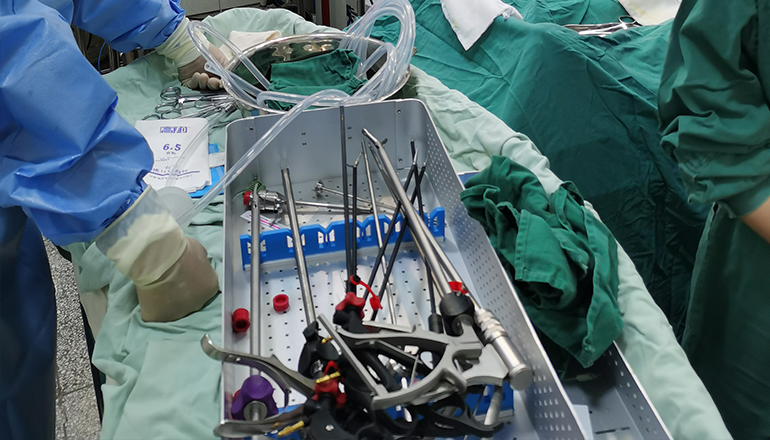- Shanghai, China
- [email protected]
- +86-21-58189111
Laparoscopic surgery has revolutionized the field of surgery by providing minimally invasive options for many surgical procedures. Laparoscopic surgery relies heavily on the skills of the surgeon to manipulate instruments and control the laparoscope to perform procedures successfully. Here are some skills related to laparoscope advance and retreat, lens and movement control that are critical for successful laparoscopic surgery:
Advance and retreat: Advancing and retreating the laparoscope is one of the fundamental skills required in laparoscopic surgery. It involves inserting and withdrawing the laparoscope through the trocar port to adjust the position of the laparoscope to achieve the best possible view of the surgical site. It is important to move the laparoscope slowly and carefully to avoid damaging the surrounding tissues.
Lens control: The laparoscopic lens provides the surgeon with a clear view of the surgical site. The surgeon can adjust the lens focus, zoom, and angle to optimize the view. It is important to use a cleaning solution to keep the lens clear, and to adjust the light source to achieve optimal illumination.
Movement control: Movement control is another critical skill required for laparoscopic surgery. The surgeon must use the instruments to manipulate and move the tissues to perform the procedure. This requires a high level of hand-eye coordination, as well as precise control over the movement of the instruments.
Depth perception: Depth perception is a crucial skill required for laparoscopic surgery. Unlike open surgery, the laparoscopic view is two-dimensional, which can make it difficult for the surgeon to gauge the depth of the surgical site. The surgeon must rely on their visual cues, such as the color and texture of the tissues, to determine the depth.

Ergonomics: Laparoscopic surgery requires the surgeon to sit or stand in an ergonomic position for extended periods of time. Proper posture, instrument placement, and hand position are crucial to prevent fatigue, discomfort, and injury.
In conclusion, laparoscopic surgery relies heavily on the skills of the surgeon to manipulate instruments and control the laparoscope to perform procedures successfully. Skills related to laparoscope advance and retreat, lens and movement control, depth perception, and ergonomics are critical for successful laparoscopic surgery. It is important for surgeons to receive proper training and practice these skills to achieve optimal outcomes and reduce the risk of complications.
Moreover, laparoscopic surgery has many advantages over traditional open surgery, such as smaller incisions, less blood loss, shorter hospital stays, and quicker recovery times. However, laparoscopic surgery is also more technically demanding, requiring specialized skills and equipment. Surgeons must have a thorough understanding of laparoscopic techniques, including the skills mentioned above, to perform safe and effective surgery.
In addition to technical skills, laparoscopic surgery also requires effective communication and teamwork between the surgeon, surgical team, and anesthesiologist. Everyone involved in the surgery must work together to ensure patient safety and optimal outcomes.
In summary, laparoscopic surgery is a valuable tool in modern medicine, providing patients with less invasive surgical options and faster recovery times. However, successful laparoscopic surgery requires skilled surgeons who can manipulate instruments and control the laparoscope to achieve optimal outcomes. By developing and practicing the necessary skills, surgeons can provide their patients with safe and effective laparoscopic surgery.
Leave a Comments